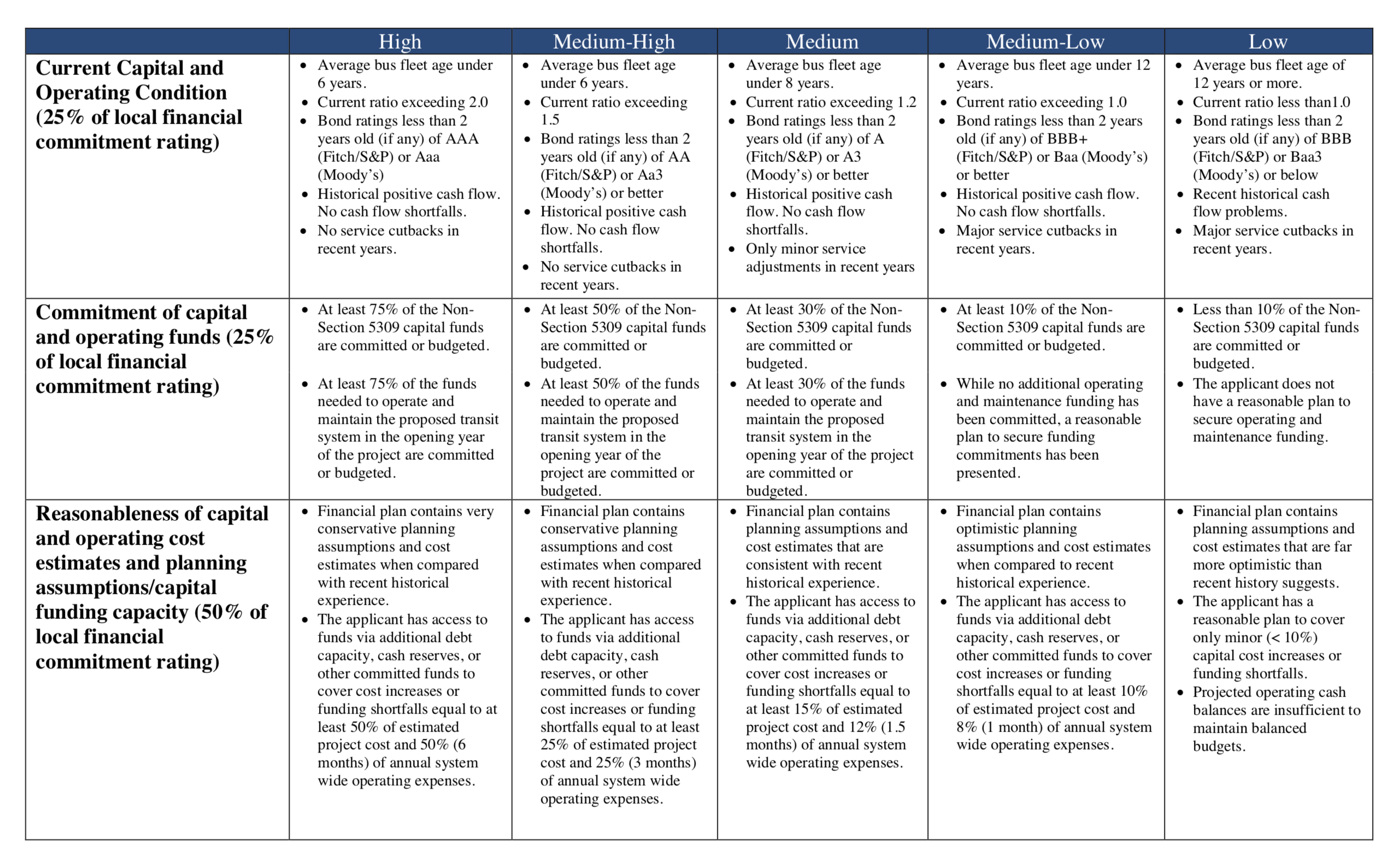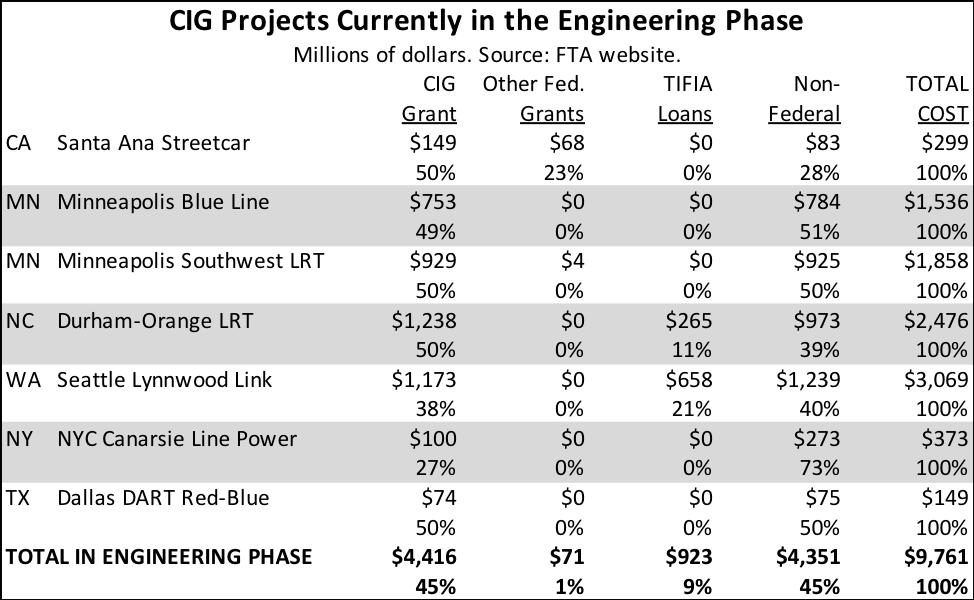July 6, 2018
Last Friday (after ETW went to press), the Federal Transit Administration sent out a “Dear Colleague” letter to transit agencies around the country formalizing the Trump Administration’s new approach to evaluating the local financial contribution to new mass transit projects.
While many of the criteria for the FTA’s Capital Investment Grant (CIG) program are set down in statute (49 U.S.C. §5309), much is still up to agency interpretation and discretion. At several hearings since taking office, Transportation Secretary Elaine Chao has attempted to explain the new policy, which creates federal loans to the local backers of a project as part of the federal contribution – not the local contribution – but she has not always met with success.
The new letter clears things up a bit. It says that “FTA considers U.S. Department of Transportation loans in the context of all Federal funding sources requested by the project sponsor when completing the CIG evaluation process, and not separate from the Federal funding sources.”
In a separate statement to ETW, Acting FTA Administrator Jane Williams said “The purpose of our letter to the transit industry is to clarify and highlight existing considerations the Department uses to make discretionary funding decisions for the Capital Investment Grants (CIG) Program. It is important for our grantees to keep these considerations in mind as they seek funding through this highly competitive and discretionary grant program. FTA will continue to evaluate projects in the CIG program consistent with the existing statute and policy guidance.”
The statute, in §5309(l), establishes that the grant from the CIG program cannot exceed 80 percent of the net capital cost of the project, and the Appropriations Committees have included a legislative proviso in the current DOT Appropriations Act effectively reducing that amount to 51 percent of the capital cost.
Nothing in the Dear Colleague letter (or any other action) can amend statute, but the letter reminds stakeholders that while the statute “provides for a phase process through which projects must advance before being eligible for funding, and identifies evaluation criteria to be used by FTA, advancing a project (including the decision whether to enter into a construction grant agreement at the end of the process) is ultimately a discretionary one.”
And the letter points out that the statute, in §5309(f)(2), provides that when “assessing the stability, reliability, and availability of proposed sources of local financing…the Secretary shall consider…the extent to which the project has a local financial commitment that exceeds the required non-Government share of the cost of the project.”
The existing standards for evaluating the local financial commitment to a project are found in the CIG guidance document (this is from the latest version, which is June 2016 – the Dear Colleague letter points out that the statute requires DOT to update the document ever two years and says they are doing so, presumably to reflect the new priorities):

The Department emphasizes that the CIG program is very competitive and is oversubscribed (annual appropriations are about $2.4 billion per year, which has to cover all new subway and light rail projects in the entire U.S., and the Hudson River Tunnel wants $6.7 billion from the account just for that one project).
At present, there are eight ongoing CIG projects that have received federal construction grant agreements that have also received federal TIFIA loans as part of the financing package. If the loans are removed from the non-federal financial totals and moved to the federal column, then seven of the eight projects have 36 percent or less non-federal funding. Only the Dulles Silver Line maintains a 50-50 federal to non-federal split under the new criteria (and that is counting both phases of the project).

However, the ongoing project with the lowest non-federal cost share under the revised criteria is the Maryland Purple Line. Presumably, it would score the lowest on the revised evaluation criteria in the current Administration. Yet it is the only one of the eight projects that was approved by Secretary Chao and not a previous Administration. (There were extenuating circumstances – the press conference at which the grant agreement was to be signed under President Obama had been scheduled but a last-minute federal injunction delayed the project into 2017, and an unusually large amount of money had been appropriated in advance by Congress for the project.)
News about the Dear Colleague first started circulating during the holiday week from Rep. David Price (D-NC), ranking minority member of the House Transportation-Housing Appropriations Subcommittee, who framed the announcement as being part of the Trump Administration pushback on the $30 billion New York – New Jersey Gateway Program of rail projects. Price also has a vested interest, since of the seven CIG projects currently in the pre-construction Engineering phase, two are counting on TIFIA loans being part of their funding package, and one of those two is in Price’s district in the Triangle.

(Ed. Note: The TIFIA loan for the Seattle project is pre-approved as part of the overall Master Credit Agreement with Sound Transit, but the sponsors of the North Carolina project do not appear to have applied for their TIFIA loan yet – it’s not on the list on the DOT website. So even if the Trump Administration were not changing its approach to the program, that TIFIA loan couldn’t be counted as committed funding anyway. And TIFIA loans are also discretionary – nothing in law requires DOT to issue any more of them.)
But the shadow of Gateway – especially the $13.6 billion Hudson River Tunnel part – does hang over the entire program, because the requested CIG share of $6.7 billion is almost three years worth of funding for the nationwide CIG program and because the project sponsors also assume another $4.3 billion in federal RRIF loans. (Secretary Chao is on firmer legal ground here – although the TIFIA statute contains language that the Secretary “may” count TIFIA loans towards the non-federal share of a CIG project, no such statutory authority exists for the RRIF program.)
Other announcements of note from the Dear Colleague letter:
- “The FTA bases its discretionary funding allocation decisions for the CIG program on a variety of factors including the extent of the local financial commitment, project readiness, and geographic diversity.” (Another blow to Gateway, since the Hudson Tunnel would be preceded by the Portal North Bridge, also part of Gateway, seeking a $811 million CIG contribution, and soon followed by the NYC Second Avenue Subway (Phase 2), seeking $2 billion from the CIG program.)
- “The FTA also considers the extent value capture, private contributions, and other innovative approaches to project development and delivery are used, including public-private partnerships…The FTA strongly encourages project sponsors to consider innovative financing and funding approaches, including value capture and private contributions.”
Also, when notifying Capitol Hill of the Dear Colleague letter, FTA mentioned the following other tweaks to CIG policy:
- FTA plans to conduct a risk assessment of New Starts and Core Capacity projects prior to entry into the Engineering phase of its Capital Investment Grants program. FTA may perform updates to the risk assessment and scope, cost, and schedule reviews prior to awarding a construction grant agreement. For Small Start projects, scope, cost and schedule reviews and a risk assessment are conducted during the Project Development phase.FTA has continued to refine the technical methods and adjust the probability thresholds it uses to undertake the risk assessment based on historic data from previous projects. When determining the reasonableness of a project sponsor’s cost and schedule, FTA reviews the estimates to determine whether they include reasonable assumptions or whether adjustments need to be made. FTA then examines risks related to the project to determine the appropriate level of contingency needed. FTA will use a 65% probability threshold to determine reasonableness of the cost and schedule estimates.






